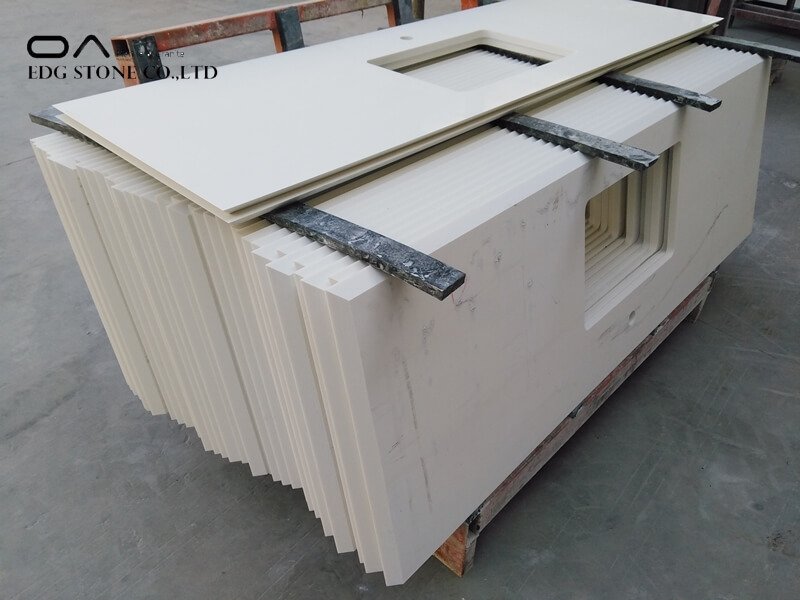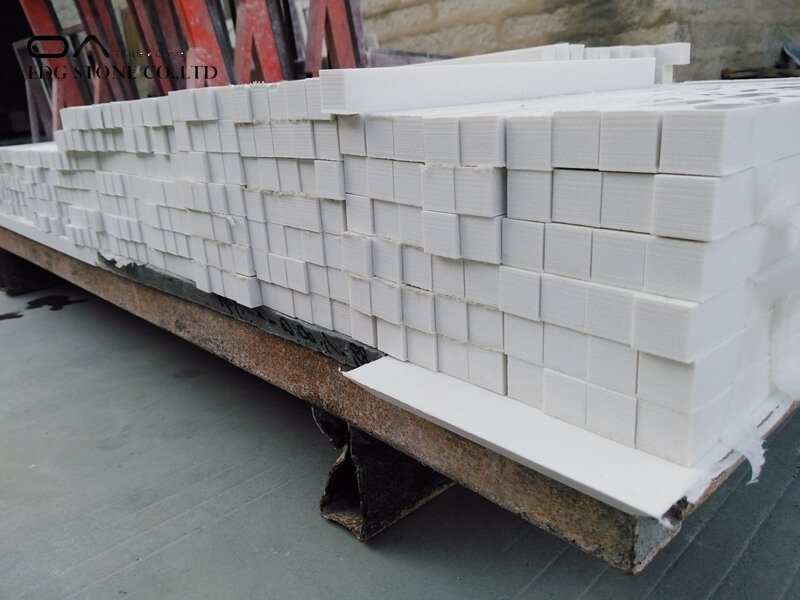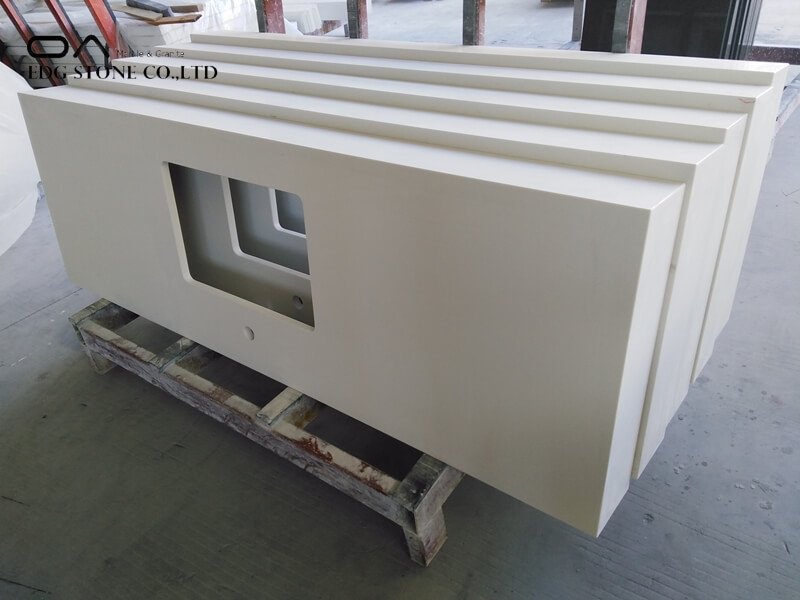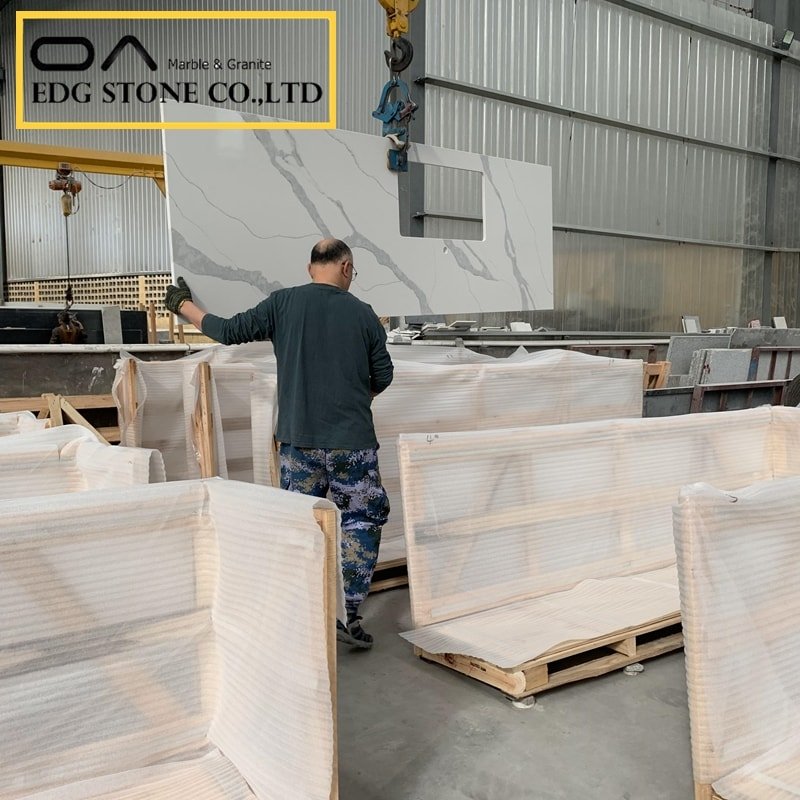Artificial stone (including quartz stone) is often used in kitchen countertops, but some consumers complain that the countertops cracked during use, and the main cause of this cracking is often caused by the poor quality control of the countertops during the processing. Did you know?
1. Common countertop cracking situations include:
1. Cracks at the splicing seams of the countertop;
2. Cracks at the corners;
3. Cracks around the above counter basin;
4. Cracks around the furnace hole;
5. The skirt in front of the furnace hole is cracked;
6. The rear water barrier is cracked;
7. The connection surface of the rear water retaining edge is cracked;
8. Cracks in the center of the countertop, etc.
2. Reasons for cracking of the countertop:
1. Cracks in the seam of the countertop: When the main installer is splicing, the seam is not aligned, the bell mouth is small and the bottom is large, the glue is not evenly spread, and more importantly, the clamp is not clamped or the clamp is not clamped after the glue is applied. Tightening, or adding curing agent in the glue or accelerating the excessive amount, making the seam more brittle, and it will crack when it is slightly impacted during use;
2. Cracks in the corners: Leaning against the wall too tightly without leaving shrinkage joints, the two cabinets are uneven or not leveled, the front corners are open at right angles, and the table surface is not uniformly shrunk due to external impact or temperature changes and cracks;
3. Cracks on the periphery of the above counter basin: there is no gap between the above counter basin and the basin hole, the basin hole is not polished and smooth, the corners of the basin hole are not rounded or there are serrated marks, and the table surface is not uniformly shrunk due to external impact or temperature changes and cracks;
4. Cracking around the furnace hole: there is no gap between the gas stove and the furnace hole, the furnace hole is not polished and smooth, the four corners of the basin hole are not rounded or there are serrated marks, and the table surface is cracked due to the impact of external force or the uneven shrinkage of the temperature change;
5. Cracks in the skirts of the above counter basins and stove holes: the load of the counter basin or stove cabinet is placed flat, when the above counter basins, the skirts of the stove holes are subjected to gravity (people stepping, stepping, etc.), etc., causing the above counter basins and stoves The skirt before the hole is cracked;
6. The rear water barrier is cracked: the cabinet is not flat or the backing board is not leveled;
7. Cracks on the connecting surface of the rear water retaining edge: the glue is not firmly bonded;
8. The center of the countertop is cracked, etc.: it is subject to high temperature, external force impact, uneven cabinets or pads, internal damage to the board, etc.
In jargon, the quality of the cabinet is divided into three parts and the product is installed in seven points. Therefore, in addition to choosing a good artificial stone panel, the processing and installation process of the cabinet countertop also directly affects the use of the overall countertop. The main factor that often causes cracking is the countertop during the processing process. Caused by poor quality control. In view of the above cracking reasons, a good installation process and details can greatly reduce your countertop after-sales problems.
Precautions for the installation of artificial stone countertops: The countertop installation design is first. In order to ensure the installation quality of the countertop, you need to pay attention to the following points before installation:
1. When designing plane splicing, attention should be paid to the physical properties of the artificial stone to avoid the consequences of joint cracking due to thermal expansion and contraction or stress concentration. When selecting the connection position, the force of the plate must be fully considered. Avoid connecting at corners or furnace openings.
2. When designing the corners of the table, full consideration should be given to stress concentration, which will cause cracks at the corners of the table. Therefore, the processor should maintain an arc angle with a radius of more than 25mm at all corners during processing.
3. When designing the opening position of the furnace opening, the opening position of the furnace opening should be greater than or equal to 80mm from the edge of the countertop to prevent cracking of the countertop furnace hole position. When opening the furnace opening, first use a cutting machine or a jigsaw to open the hole, and then use The gong machine or hand grinder polish and trims the edges to achieve a smooth effect. The radius of the four corners is basically uniform. Because the jigsaw and cutting machine open holes, there are sawtooth marks on the periphery of the cut furnace hole and there are residual cracks, which can easily cause the furnace hole to Open holes and cracks. Stone Research Institute stone5A
4. The corners at the opening of the furnace mouth should be rounded with a radius of more than 25mm. The four corners must be reinforced with homogenous plate plates (as shown in the figure). There must be a certain space between the furnace body and the countertop. The distance is 4mm-6mm, and heat insulation cloth and tin platinum paper are added around the opening for heat insulation protection measures.
5. When designing the countertop, consider the limitations of stairs, elevators, doors, and other transportation channels on the countertop size, and the on-site joints should meet the aforementioned joint requirements.
6. When designing the countertop, there should be a 2-4mm expansion gap between the countertop and the wall to effectively ensure that the countertop does not crack due to thermal expansion and contraction.
7. When designing the countertop support frame or support plate, ensure that the maximum distance does not exceed 600 mm to reduce the deformation or even fracture of the countertop









